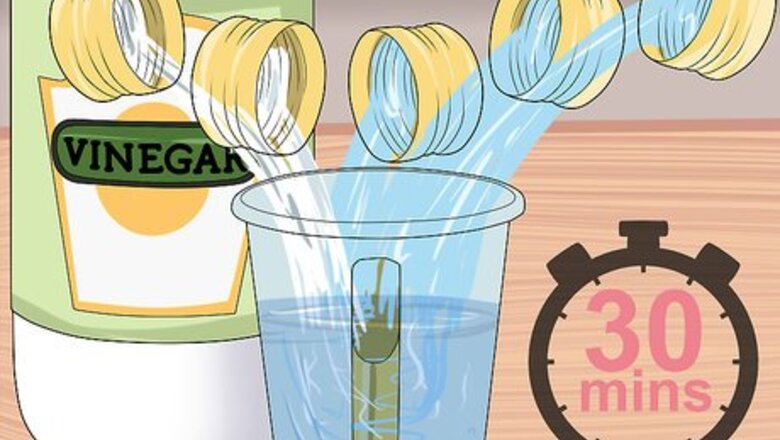
views
X
Research source
With a little care, your saxophone can sound great for years to come.
Cleaning the Reed
Disassemble the saxophone. Loosen the ligature, then remove the mouthpiece, its reed, and the saxophone’s neck. You’re going to want to clean these parts often since they come in contact with your mouth. The reed is the part of the mouthpiece that produces sound from vibration and is sensitive to bacteria, fungus, heat, and pressure.
Wipe off the reed. The warm air you blow into it contains saliva, which provides a moist place for bacterial and fungal growth as well as food particles that damage the instrument. A reed that is cleaned often requires at least a wipe down with a clean, dry towel or specialized swab after every use. This will stop bacteria and chemicals from congealing. Specialized swabs and brushes for saxophone cleaning can be bought at music stores or online.
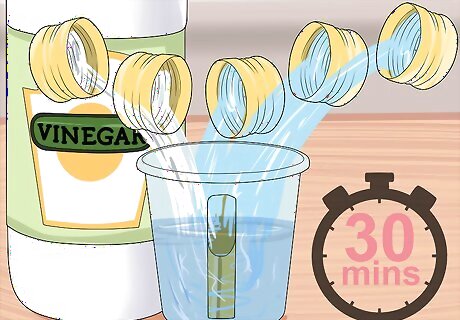
Deep clean the reed. A wipe will only remove the immediate moisture. To kill germs and prevent buildup, a more thorough cleaning is recommended. At least once a week, soak the reed in a cup of two caps of vinegar and three caps warm water for 30 minutes. Afterwards, rinse the reed with warm water to remove the vinegar.
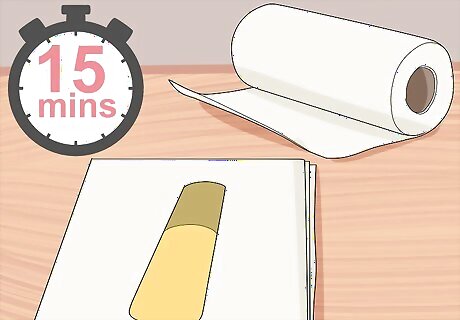
Choose a clean spot for the reed to dry in open air. Any moisture can reintroduce bacteria when it is sealed inside the saxophone case. Place it on a paper towel. After about 15 minutes, replace the paper towel and flip the reed. Once it is completely dry, store it in a reed bag inside your saxophone’s case.
Cleaning the Main Mouthpiece
Treat the mouthpiece regularly. Once a month, or weekly, if the saxophone is used daily, remove the mouthpiece and begin treatment. Saliva collects in the mouthpiece, causing buildup of a substance called limescale that affects the sound and makes the mouthpiece difficult to remove.
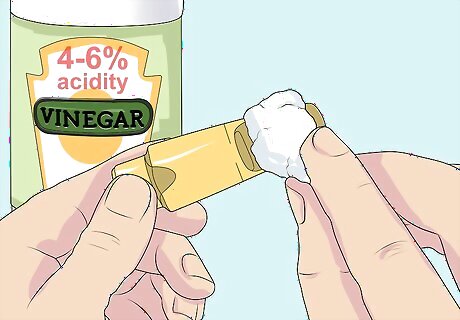
Apply a weak acid. If the limescale has thickened, an acidic substance such as vinegar or hydrogen peroxide works for the purpose of removal. Exposure to these acids can hasten discoloration, though, so you may wish to brush off the limescale by hand if possible. With a vinegar of 4-6% acidity, soak two cotton wads. Let the first rest on the window of the mouthpiece. After ten minutes, remove it and gently rub off the limescale with the second. Repeat a second time for tough cases. With hydrogen peroxide, submerge the mouthpiece for two hours. The chemical will begin to dissolve the limescale on its own.
Wash the mouthpiece with soap and water. Avoid hot water and harsh detergents, as these both damage the instrument. A gentle detergent and lukewarm water is enough to remove vinegar, eliminate most bacteria, and still allow you to get at the limescale.
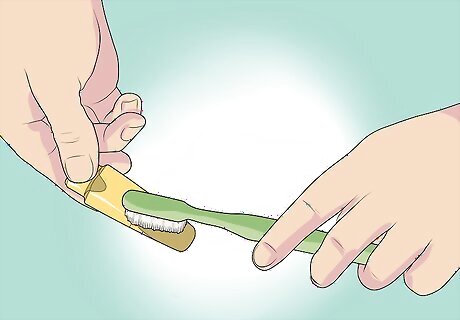
Brush away the limescale. This can be done with a small toothbrush or a specialty mouthpiece bottlebrush. Specialized swabs can be pulled from the neck and through the mouthpiece on a string. This offers some bacterial and saliva removal, but a more thorough cleaning is recommended.
Soak the mouthpiece in germicide. Sterisol is a germicide readily available for use on instruments, but bathing the mouthpiece in household mouthwash for a few minutes is also effective. This step is not mandatory but is useful in eliminating any leftover bacteria.
Choose a clean spot in open air for the mouthpiece to dry. This will prevent the mouthpiece from reintroducing dampness that allows bacteria to grow. Once all moisture is gone, store it in the saxophone case.
Cleaning the Neck

Run a swab through after use. Saliva and build up collect in the neck. Put the swab in the bell and then pull it through the neck on a string.
Remove the limescale. This is the same process you used on the mouthpiece, requiring warm water, soap or detergent, and a bottlebrush or toothbrush to be used weekly. Dip the brush into the warm, soapy water and use it to attack the limescale. Rinse out the remainder under a faucet with lukewarm water.
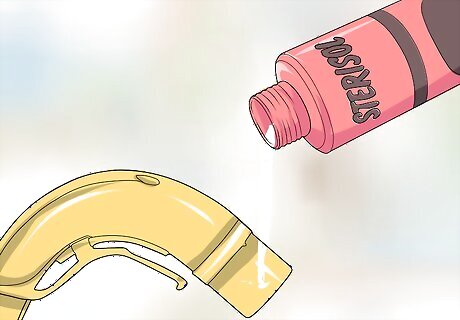
Sterilize the neck. Again, this is optional, as the soap and water takes care of the bacteria well enough. Any leftover bacteria or odor can be finished with certainty here. Pour Sterisol germicide into the neck so that it coats the inside. Let it dry in a clean place on a paper towel for a minute, then rinse it under lukewarm water. Either let it air dry or dry it by hand with a swab or towel before storing. Vinegar can be used here, too. After loosening the limescale with soap, water, and brushing, stop the mouthpiece with a cork. Surface cover any holes, prop the neck upright, then add either cold or lukewarm vinegar. After 30 minutes, rinse out the vinegar with soap and warm water, then dry it in air or by hand.




















Comments
0 comment